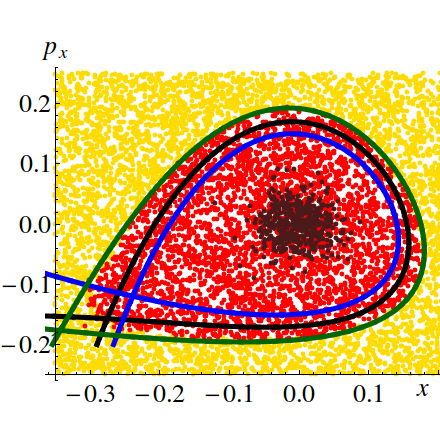Finding stability domains and escape rates in kicked Hamiltonians
Raju, A., Choudhury, S., Rubin, D. L., Wilkinson, A. & Sethna, J. P.
Storage rings have particles that go around in trajectories that are bent by magnets, some of which are nonlinear. The resulting trajectories have regions of chaos but also have noise from various sources. The paper used and compared analytic methods to capture the stable region in phase space (dynamic aperture). Moreover, the paper calculated the equilibrium distribution (emittance) and escape rate of particles from the dynamic aperture.
Particles in storage rings escape due to chaos and nice. We calculate the stable region and the rate at which they escape. This was one of goals of the Beam Dynamics group of CBB for the better construction of storage rings.
Link to full publication:

